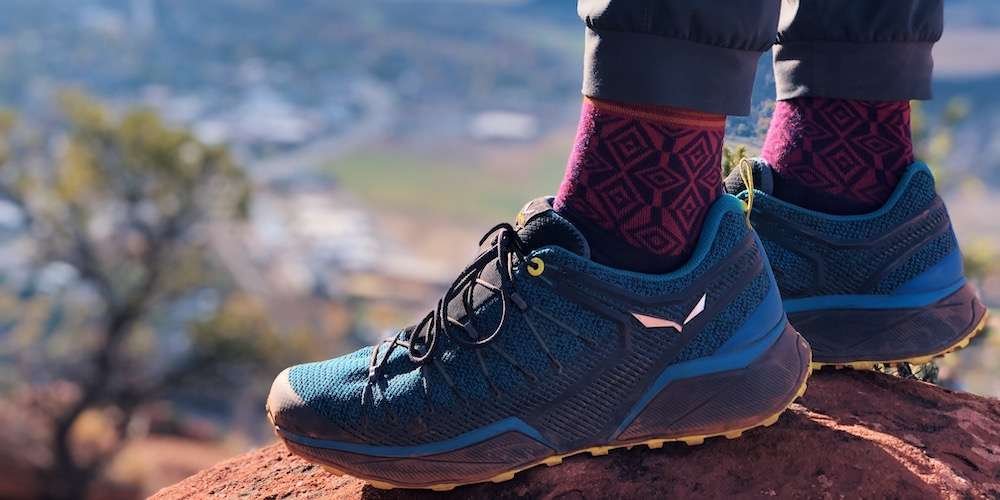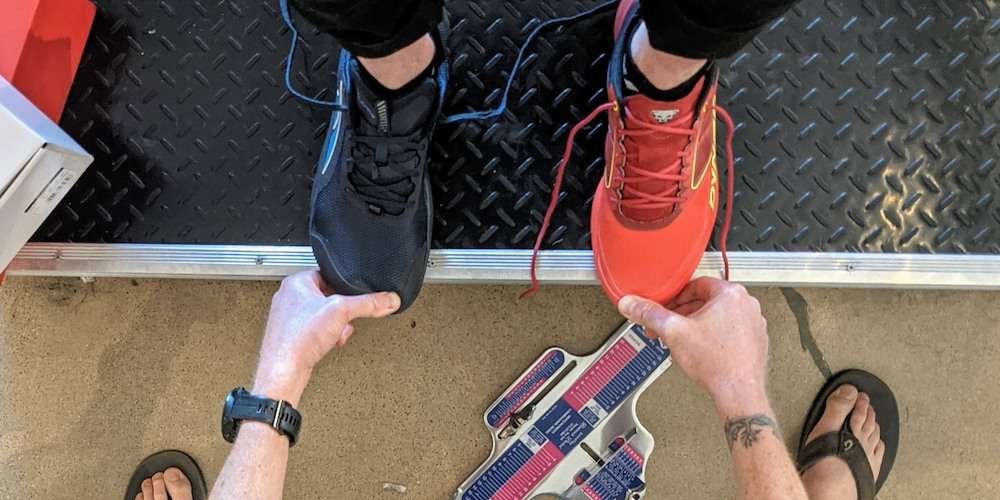
When we walk and run through the backcountry, heck, when we walk and run anywhere, we often forget about the hard work that our feet are doing. Propulsion, cushion, balance. These are three of the primary functions of the foot when we’re moving. When the foot loses the ability to perform any one of these functions, well, you’re either going to be stuck standing still, banged up, or on your butt off the side of the trail. A proper fitting shoe, replaced when it should be, will allow your feet to propel you, protect you, and keep you upright, moving where you want to be. To help your understand what to look for, we broke down the three keys to a proper fitting shoe below.

Balance
They say balance is key to most things in life, and this is certainly true when it comes to the foot. Walking and running is essentially a combination of one-legged hops and balancing acts. The foot does this best when in a balanced position, keeping the rest of the chain aligned (feet-ankle-knees-hips-back). From one person to the next the foot is performing the same task, but may be a completely different shape. Shoes also come in a variety of shapes and sizes. When buying a piece of performance footwear, it’s important that the shape of one’s foot meshes with the shape of the shoe so the foot can be as balanced as possible for as long as possible. When the foot becomes unbalanced, the rest of the chain becomes misaligned and bad things can start to happen. When we fit footwear, we take into account the shape of your feet and the shape of the shoe, marrying the two together for the perfect fit.
It is also important to remember that shoes break down, and it’s the structure and cushioning in the midsole that will break down first. Our foot is designed to land on the outside (this is the reason 99% of people have the most tread wear on the outer corners of their heel, quick, look at your shoes!), because of this it is normal for the cushioning and structure in this area to bread down first. As this happens a shoe can go from a nice and level, stable, balanced platform and turn into a squishy, canted, unstable one. If it feels like you’re sliding off the outside of your shoes, the shoe is the wrong shape for your foot, or it’s very broken down and needs to be replaced.
Security
A key part of keeping the foot balanced on the platform of a shoe is a secure fit where it matters most. When moving, the heel counter in a shoe should keep your heel firmly in place. The heel counter helps anchor the foot and sets the direction of the foot on the shoe. Movement here can cause blistering, but can also cause play through the rest of the shoe. We also want a secure fit through the midfoot. A proper fitting shoe should feel like it’s giving your foot an even, light hug all the way around. You don't want to feel like you’re getting hugged on one side of your foot and not the other, this can be a sign the shoe isn’t the correct shape for your foot. Security in these two areas will allow you to size a shoe correctly (with space at the end, addressed next), and still feel like you’re held and supported by your shoes.

Space
When it comes to running and hiking shoes, not enough space in the forefoot (toe box) is the most common mistake people make when sizing themselves. Space in the front of a shoe is important for a few reasons. First, space allows the foot to stretch and splay when you put weight into it. The foot naturally wants to do this, it is how the foot helps dissipate shock and energy. Shoes that are too small limit the foot’s ability to absorb this shock, which causes it to get locked in the joints of the foot. This can cause pain, discomfort, blisters, and black toenails in the short run, but long term can cause bunions, arthritis, and other not-so-fun foot conditions. Space at the end of a shoe will also allow the foot to swell inside the shoe during long outings. When standing in a shoe, we recommend you’re able to put ½ to a full thumbs-width of space (a penny is about the width of an average thumb, for reference). Check out the photo above with adequate space on the left and not enough on the right. Blisters, black toes, and foot pain shouldn’t be holding you back on your next summer adventure.



